 [A little under three years ago, the Eastman Kodak Corporation went bankrupt. Slightly over a year ago, Kodak completed its bankruptcy process and, much chastened, began its modest rebirth. To celebrate the first anniversary of its return to fiscal solvency, I’m posting here — complete with footnotes — the essay I wrote for Swiss photographer Catherine Leutenegger’s monograph, Kodak City, just published by Kehrer Verlag. This is the second of two parts; click here for part 1. — A. D. C.]
[A little under three years ago, the Eastman Kodak Corporation went bankrupt. Slightly over a year ago, Kodak completed its bankruptcy process and, much chastened, began its modest rebirth. To celebrate the first anniversary of its return to fiscal solvency, I’m posting here — complete with footnotes — the essay I wrote for Swiss photographer Catherine Leutenegger’s monograph, Kodak City, just published by Kehrer Verlag. This is the second of two parts; click here for part 1. — A. D. C.]
•
George Eastman bequeathed his house and gardens[1] to the University of Rochester. Eventually this became the George Eastman House International Museum of Photography and Film, an independent, non-profit museum opened to the public in 1949: the world’s oldest museum of photography, and one of the world’s oldest film archives. Honoring George Eastman’s memory, Kodak for many years provided much of the museum’s support.[2]
Today you can find such museums all over the world; the Eastman House established the template for them. The field of photography benefitted from Kodak’s patronage in other ways as well. Though the corporation did not lavish free film and cameras on photographers or build a major collection, as Polaroid did,[3] in the 1980s and ’90s they funded a number of projects by individual photographers (Benedict J. Fernandez, Susan Meiselas, Elizabeth Sunday, and Marilyn Bridges among them).
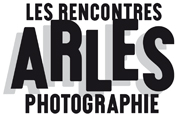 More importantly, in terms of impact, starting in the 1970s they became the primary sponsor of the very first photography festival, the Rencontres Internationales de la Photographie in Arles, France, and thereafter underwrote, in whole or in part, dozens of those that followed as the photo-festival circuit burgeoned. These events served to expand and internationalize the photo scene in unprecedented ways. Kodak’s seeding of this global network of platforms remains an underappreciated contribution to the medium’s public visibility and the expansion of its audience.
More importantly, in terms of impact, starting in the 1970s they became the primary sponsor of the very first photography festival, the Rencontres Internationales de la Photographie in Arles, France, and thereafter underwrote, in whole or in part, dozens of those that followed as the photo-festival circuit burgeoned. These events served to expand and internationalize the photo scene in unprecedented ways. Kodak’s seeding of this global network of platforms remains an underappreciated contribution to the medium’s public visibility and the expansion of its audience.
•
The irony, of course, is that instead of getting devastated by the digital evolution the Eastman Kodak Corporation could have owned it.
The very first digital camera, after all, got born in one of Kodak’s own labs, the invention of one of its engineers, Steven Sasson. Sasson devised his prototype in 1975.[4] At that moment Kodak dominated the U.S. market, with its products earning 90 percent of film sales and 85 percent of camera sales in this country (according to a 2005 case study for the Harvard Business School[5]), and had substantial sales around the world.
A triumphant first century had given Kodak unprecedented brand recognition internationally in the field of lens-based imaging. Sasson’s creation positioned them to further that legacy and build on that momentum with groundbreaking imaging systems that would bridge the transition from analog to digital photography.
But a corporate culture built on the production and sale of light-sensitive films and paper, wildly successful at that for generations, could not envision a world in which dematerialized electronic files would replace the photograph as a physical object. Afraid — and rightly so — that digital imaging would undermine the robust market for their films, papers, and chemistry, Kodak’s upper-level management shelved what Sasson had wrought.
 Nor did they learn much in the ensuing years. In 2000 I delivered the keynote address to the World Press Photo Awards Days, an annual celebration of documentary, photojournalism, and press photography held in Amsterdam, where World Press Photo was founded in 1955. In that talk I described what I foresaw as the practice of a young photojournalist just graduating and entering the field professionally in the year 2020, her toolkit almost entirely digital.[6]
Nor did they learn much in the ensuing years. In 2000 I delivered the keynote address to the World Press Photo Awards Days, an annual celebration of documentary, photojournalism, and press photography held in Amsterdam, where World Press Photo was founded in 1955. In that talk I described what I foresaw as the practice of a young photojournalist just graduating and entering the field professionally in the year 2020, her toolkit almost entirely digital.[6]
Since Eastman Kodak served for many years as WPP’s main sponsor, mid- and upper-level Kodak executives, most of them middle-aged, filled the hall. I heard from colleagues seated among them that they grumped and grumbled throughout my presentation, whose projections they found ridiculous.[7] A year later, at Photokina in Cologne, Germany, Kodak would declare that the company was (belatedly) taking the plunge into the digital realm. In 2011 Kodak busied itself denying the proximity of bankruptcy after a disastrous slump in its market value, primarily the result of the company’s failure to make its mark in the digital-imaging industry. The next year they went under.
Lo, how the mighty have fallen.
•
The first time I visited Rochester, in 1971, in my role as an emerging photography critic and participant in a George Eastman House winter symposium,[8] Harold Jones, founding director of the Center for Creative Photography in Tucson, Arizona, then an assistant curator at the GEH, had the assignment of squiring me around the place. I got the usual visiting fireman’s tour of the current exhibitions, the collection, the print study room, the library.
Then Harold guided me back into the great entrance hall (known there as “the conservatory”), to stand in front of the massive Aeolian pipe organ ― an unusual feature in such a mansion, to say the least, so large that its pipes disappeared into the high ceiling. “Eastman loved his mother very much, you know,” Harold reminded me. “She lived here with him, and he mourned her fiercely when she died. He had this installed after her passing, and hired an organist to play it regularly for him and his guests.”
He led me over to the antique elevator, took me up to the second floor, and opened the door of a small room above the entrance hall. The ends of the pipes from the organ, rising from below us, filled it almost completely. In that enclosed and now-crowded space, the volume during a performance would have been deafening. “This had been his mother’s bedroom,” Harold said, smiling.
If the ghost of Eastman’s mother haunts the George Eastman House, the ghost of Eastman himself haunts the city of Rochester. He bears no blame for Kodak’s collapse; the executives whose collective and individual failures of imagination led to the company’s downfall were, if even born, mere toddlers when he ended his life in 1932. An inventor himself, one who anticipated the future, he’d perhaps have jumped on Steve Sasson’s idea and committed company resources to it.
Unlike the nearsighted suits whose complacency set the company on its downward slide, Eastman understood that Kodak sold not a product line but a way of life that wove photographic images into quotidian experience. Of his initial project he would say much later, “The idea gradually dawned on me that what we were doing was not merely making dry plates, but . . . starting out to make photography an everyday affair.” His goal? “To make the camera as convenient as the pencil.” Today’s digital photography — with most of the citizenry carrying cameras and sharing photos with each other as soon as they’re made — fulfills Eastman’s dream, even if not in a form that he would immediately recognize.
•
Catherine Leutenegger’s attentive, deadpan studies of present-day Rochester describe the face of a city once central to photography but now marginalized and adrift, as it might appear to Eastman should his specter bicycle through the streets as he once did in the flesh. Will Rochester go the way of Detroit and other rust-belt cities in the post-industrial age? Can it reinvent and reconfigure itself for the 21st century? What happens to Rochester now depends not on Kodak but on Rochester itself — its citizens, its elected officials, its small businesspeople and corporate heads. Rochester’s revitalization will require inventiveness and inspiration, for both of which the city can look to this native son and the world-changing enterprise he built and nurtured there.
(Part 1 I 2)
•
[1] From the website of the George Eastman House.
[2] Eastman had his ashes buried on the grounds of Kodak Park. Rumor has it that they’ve been stolen.
[3] See my 2009-2012 reports on the post-bankruptcy dispersal of the Polaroid Collection.
[4] In 2010 Pres. Barack Obama awarded Sasson the National Medal of Technology and Innovation. An interview with Sasson detailing the invention, “Steven Sasson – The Dawn of Digital Photography,,” appears at MegaPixel.
[5] See Giovanni M. Gavetti, Rebecca Henderson and Simona Giorgi, “Kodak and the Digital Revolution (A).”
[6] “2020 Vision: Photojournalism’s Next Two Decades,” delivered on April 16, 2000. Unpublished.
[7] To my surprise and delight, the late Tim Hetherington, then a young WPP-award-winning photographer who joined me, Manfred Heiting, Grazia Neri, and several others for a panel discussion following this keynote talk, prefaced his comments by saying “I’m the photographer A. D. Coleman just described.” In his own brief talk the following afternoon he proceeded to demonstrate that in detail.
[8] “Transitions and Translations of Photographic Response,” George Eastman House, February 1971.


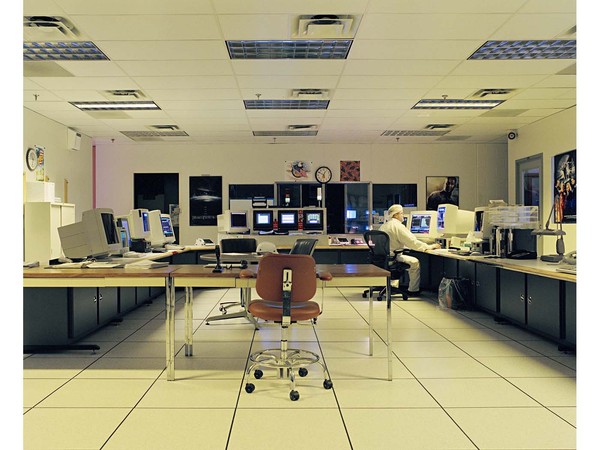
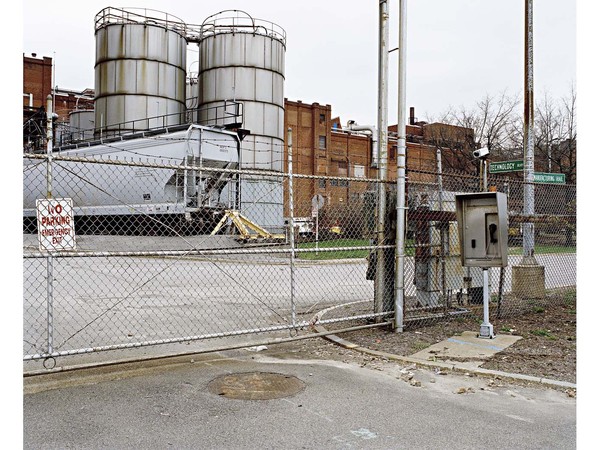
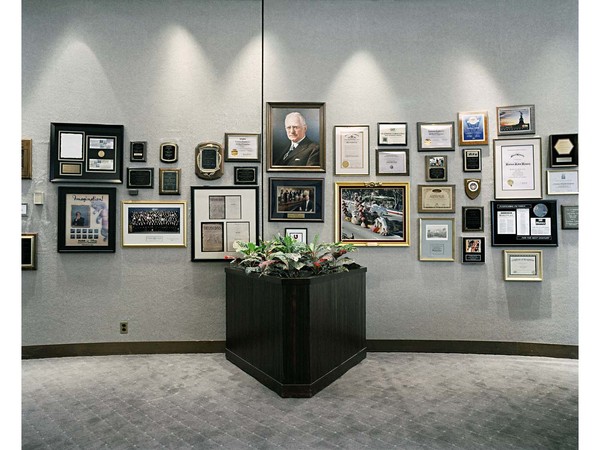
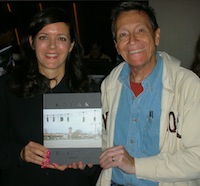




Good Morning, Allan,
Enjoying Photocritic International as always.
Just a comment on this sentence in today’s post:
“Though the corporation did not lavish free film and cameras on photographers or build a major collection, as Polaroid did … ”
I don’t suggest we try to compare an important 20th Century collection (Polaroid’s) with the primarily 19th century collection Kodak transferred to the newly created George Eastman House at its founding in 1947/49, but the so-called Eastman Historic Photographic Collection was and is certainly a major collection of comparable importance to the now partially dispersed Polaroid collections.
Kodak had acquired historic photographica at least as early as the post-WWI period when they helped Josef Maria Eder reestablish his Graphische lehr und versuchanstalt in Vienna by purchasing a selection of experimental specimens now known at GEH as the “Eder Collection” from him. (similar, though not quite as extensive as the Eder materials in the Epstean Collection at Columbia).
The source of Eastman House’s extraordinary collection of French daguerreotypes including the portrait of Daguerre, other early French materials – Henri Le Secq, Blanquart-Évrard, et al – was the collection of Gabriel Cromer purchased by Kodak from Cromer’s widow in 1939 and shipped to Rochester shortly before WWII.
Kodak’s rationale for acquiring historic photographic materials was partially research (though hard to imagine what research value accrued from Eder or Cromer collections), partially assisting friends in need (viz Eder), partially the pet projects of high-level Kodakers with personal interests in photographic history (viz Dr. Walter Clark), and wholly that they were so cash rich they could easily afford to indulge in collecting without well defined intentions.
Beaumont Newhall’s early efforts at Eastman House included cataloging the EHPC collection. In addition to Kodak’s purchases such as the Eder and Cromer collections, there are other items in EHPC with difficult-to-determine provenance. Both before and after the founding of Eastman House, sometimes historic artifacts would just walk in the doors from people who thought the company would be interested and/or an appropriate repository.
Regarding “lavish free film and cameras on photographers”, Kodak may not have been as lavish as Polaroid, but Ray DeMoulin’s name comes to mind as at least one Kodak exec who was in a position to develop creative photographers’ loyalties via such practices.
Regards,
Andy
Thanks for this, Andy.
I don’t think of what Kodak acquired for its private purposes as a collection — more like a heap than a whole, to use a distinction from general systems theory. It didn’t really become accessible to the public, and organized, until Eastman House opened as a museum after his death. But you’re certainly right in pointing out that Kodak purchased important items, starting early on, and that the materials they acquired, even if haphazardly, formed the core of a world-class collection once Newhall started to rationalize it in an institutional setting.
Though I don’t mention DeMoulin (who left under a cloud, as I recall), he did persuade Kodak to subsidize major projects by some notable figures, including those I name at the end of that paragraph.
Dear A. D. Coleman:
Your article on the fate of Eastman Kodak Corp. was unusually well done.
Although its coverage was broad, it was notably succinct while including details and related factors many would not know or have missed.
The negative comment in feedback would indicate serious company failure. My experience with their educational support, and in particular Ken Lassiter, the Kodak representative for education I worked with, was more than positive. He was helpful, proactive and generous.
We interacted through PIEA (the Photo Imaging Education Association), and directly at UTA.
The 2003 photo of [George Eastman’s] boyhood home, I used to joke, showed his mother on the porch (actually a quilter/guide).
J. B. Colson
Professor Emeritus, School of Journalism
Fellow: Briscoe Center for American History
The University of Texas at Austin
Glad you enjoyed that essay.
I got to know Ken Lassiter professionally and socially back in the days when he worked for Kodak. He and Ray DeMoulin struck me as the only Kodak execs I’d ever met who saw beyond Big Yellow’s 1950s era.